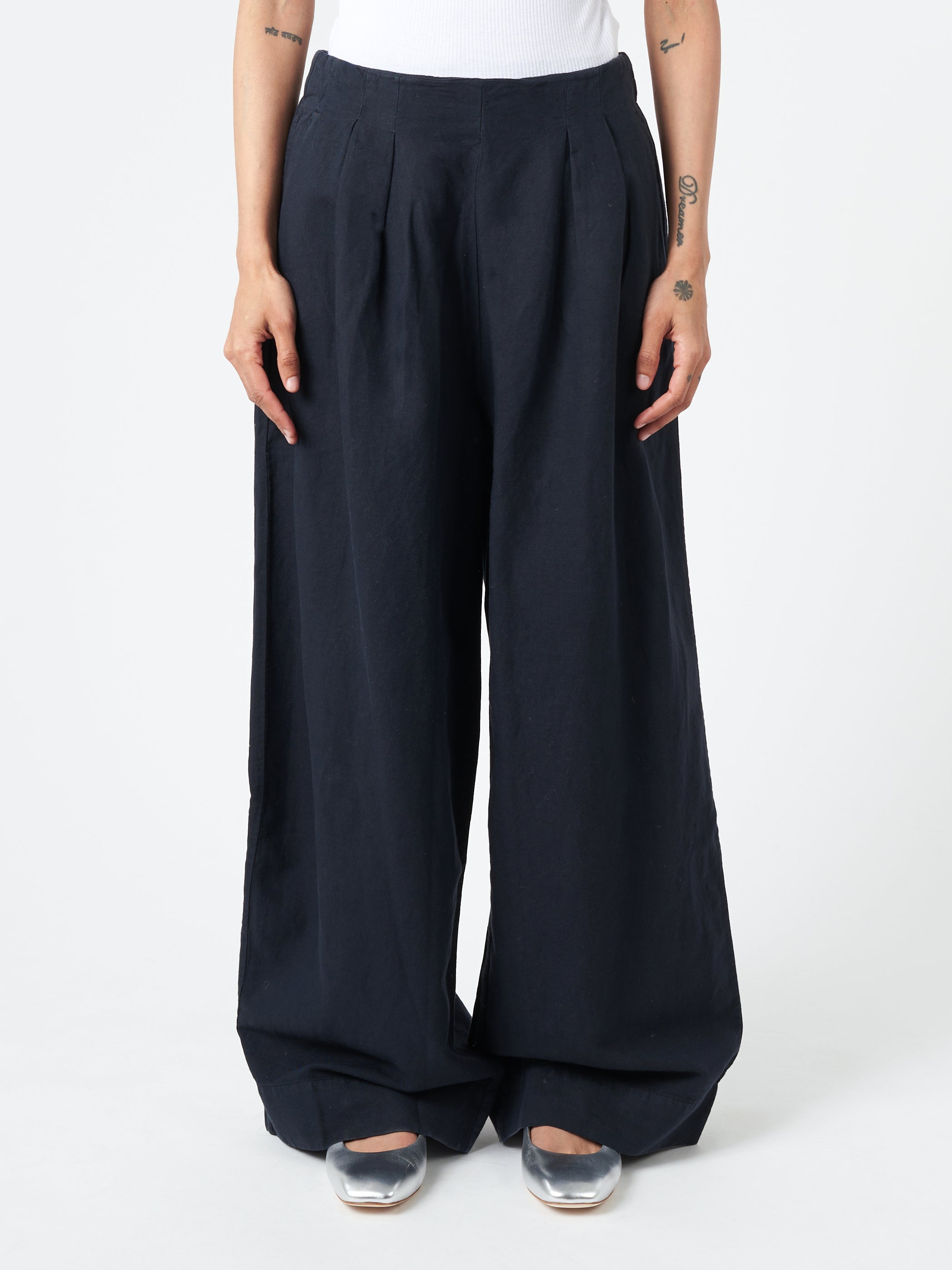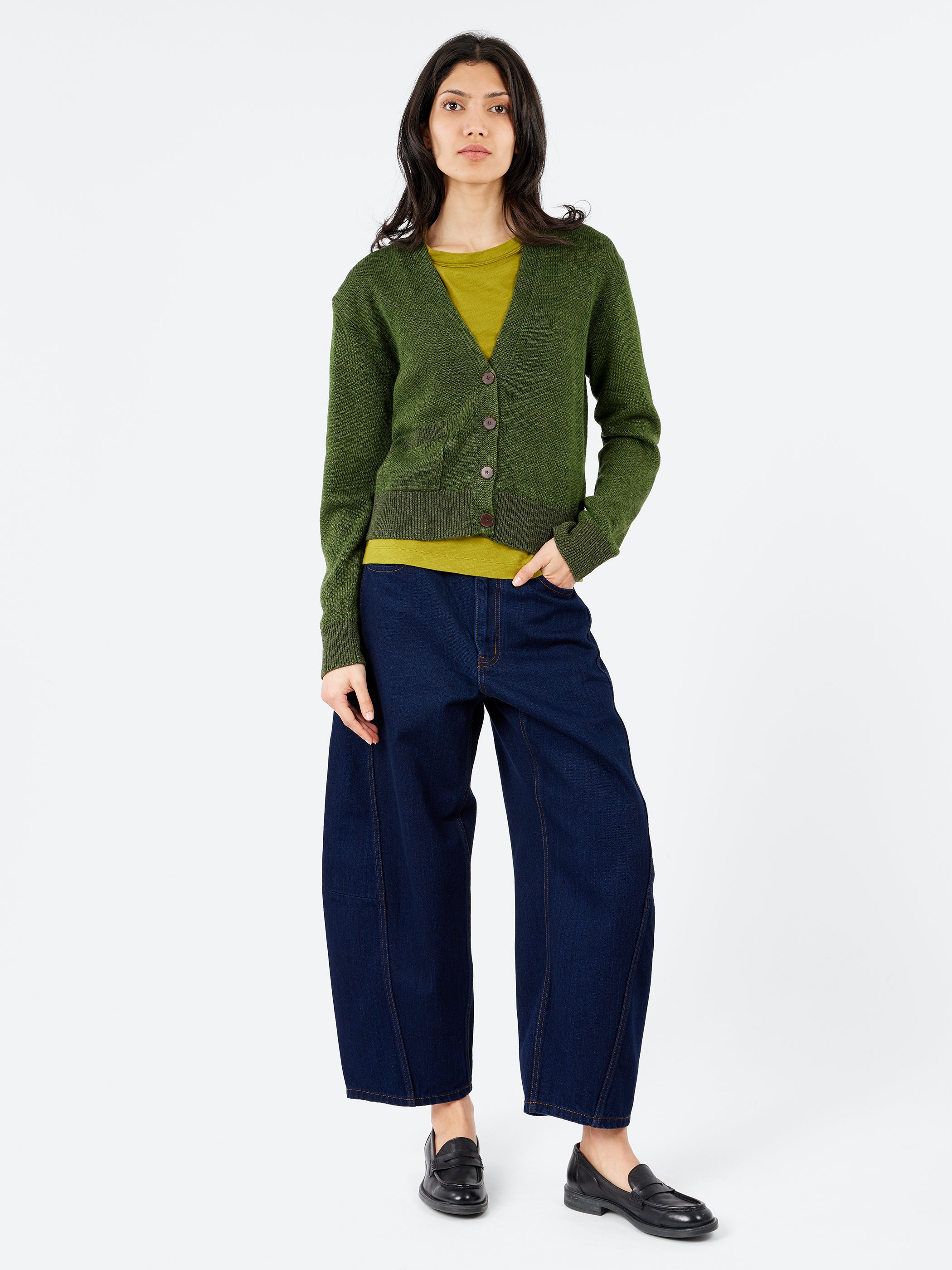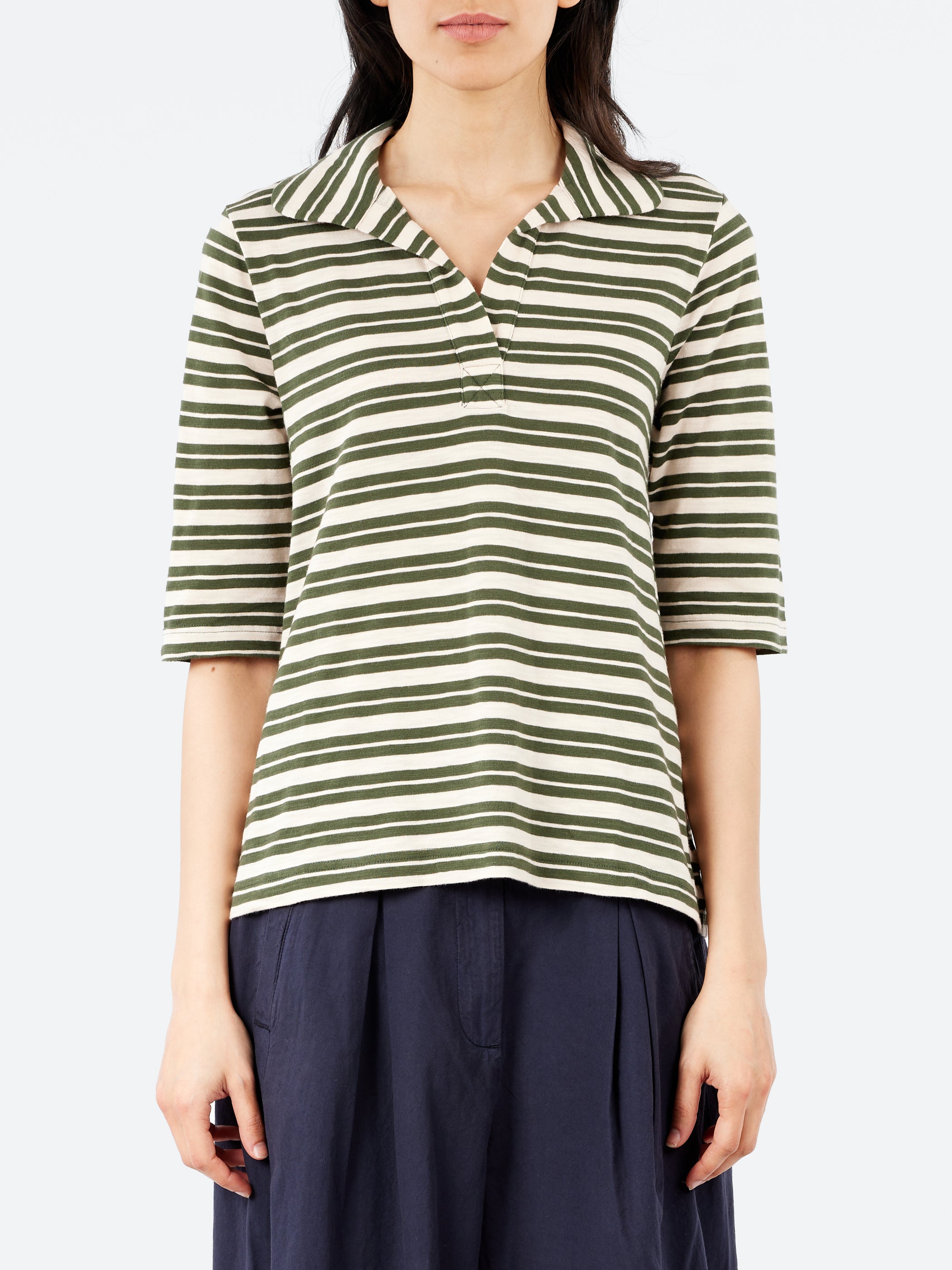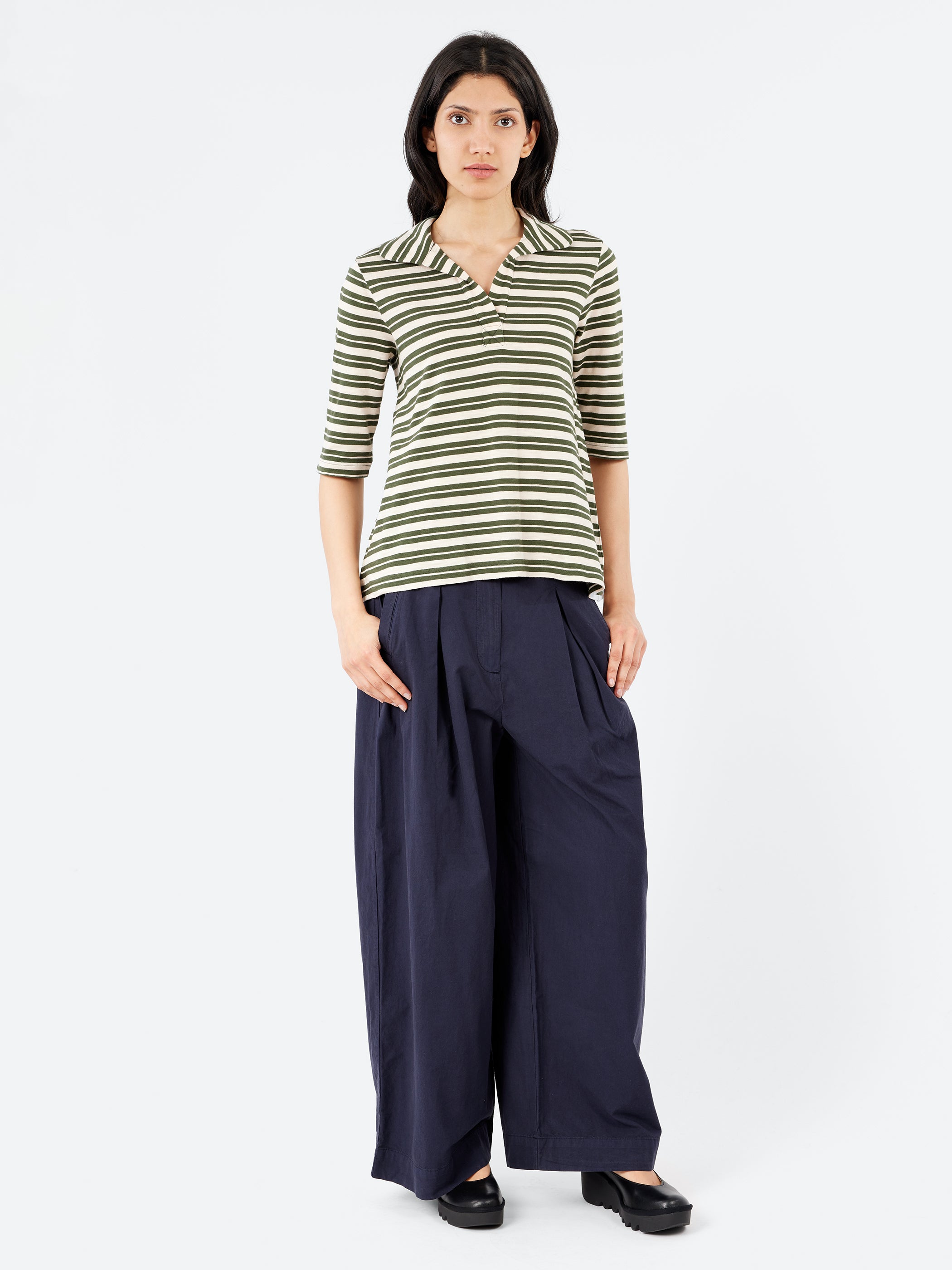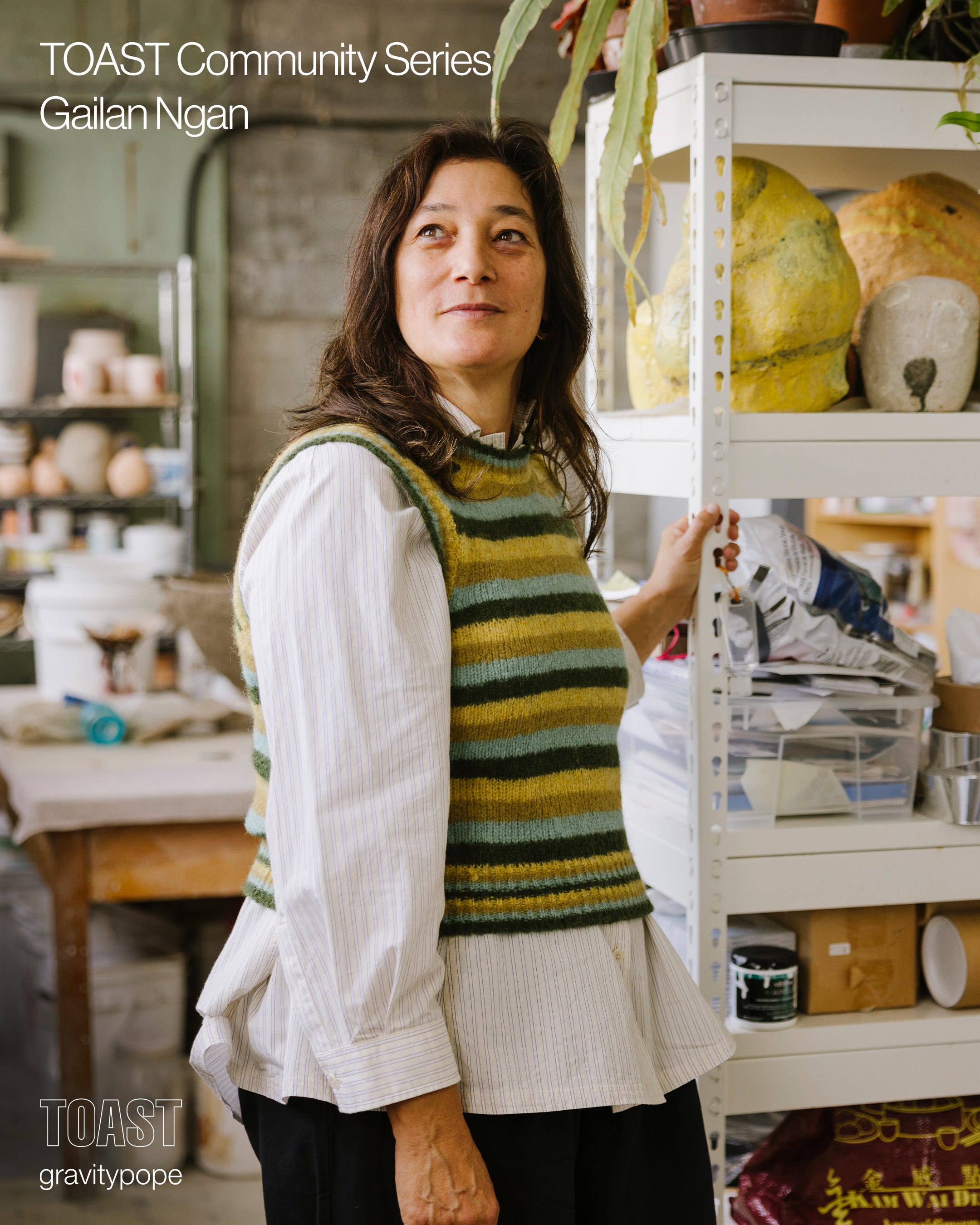
Vancouver-based artist Gailan Ngan began creating at an early age, mentored by her father and renowned ceramicist, Wayne Ngan. Her work embraces the tactility, shape and materiality of the medium, largely influenced by the historically resource-rich West Coast, and draws inspiration from forms found in nature. She is recognized for her experimental approach to the ceramic medium, crafting vessels and forms that are both functional and abstract. Gailan’s studio practice is shared between Vancouver and co-managing the art estate of her late father on Hornby Island.
TOAST and gravitypope had the opportunity to visit Gailan at her Vancouver studio and join her as she shares recent work at Monte Clark.
View the full journal and interview below.
Gailan wears select pieces from TOAST’s Autumn Winter 2024 Collection - “Patterns & Pathways”:
Through our Autumn Winter 2024 collection, Patterns & Pathways, we examine how exploration offers a sense of meaning in an ever-changing world. Earthly and grounded, our collection begins rooted in the natural world. Vibrant hand techniques like batik and block-printing form patterns that reflect the art of mapmaking, while kantha is hand-stitched with grid formations, reminiscent of lines tracing a pathway.
As we journey through the season, a simplicity inspired by Georgia O'Keeffe underscores the collection. Sculptural shapes are realized in grey flannels and soft wools, while enveloping seams and tie details wrap across the body, evoking an explorer seeking protection from the elements.
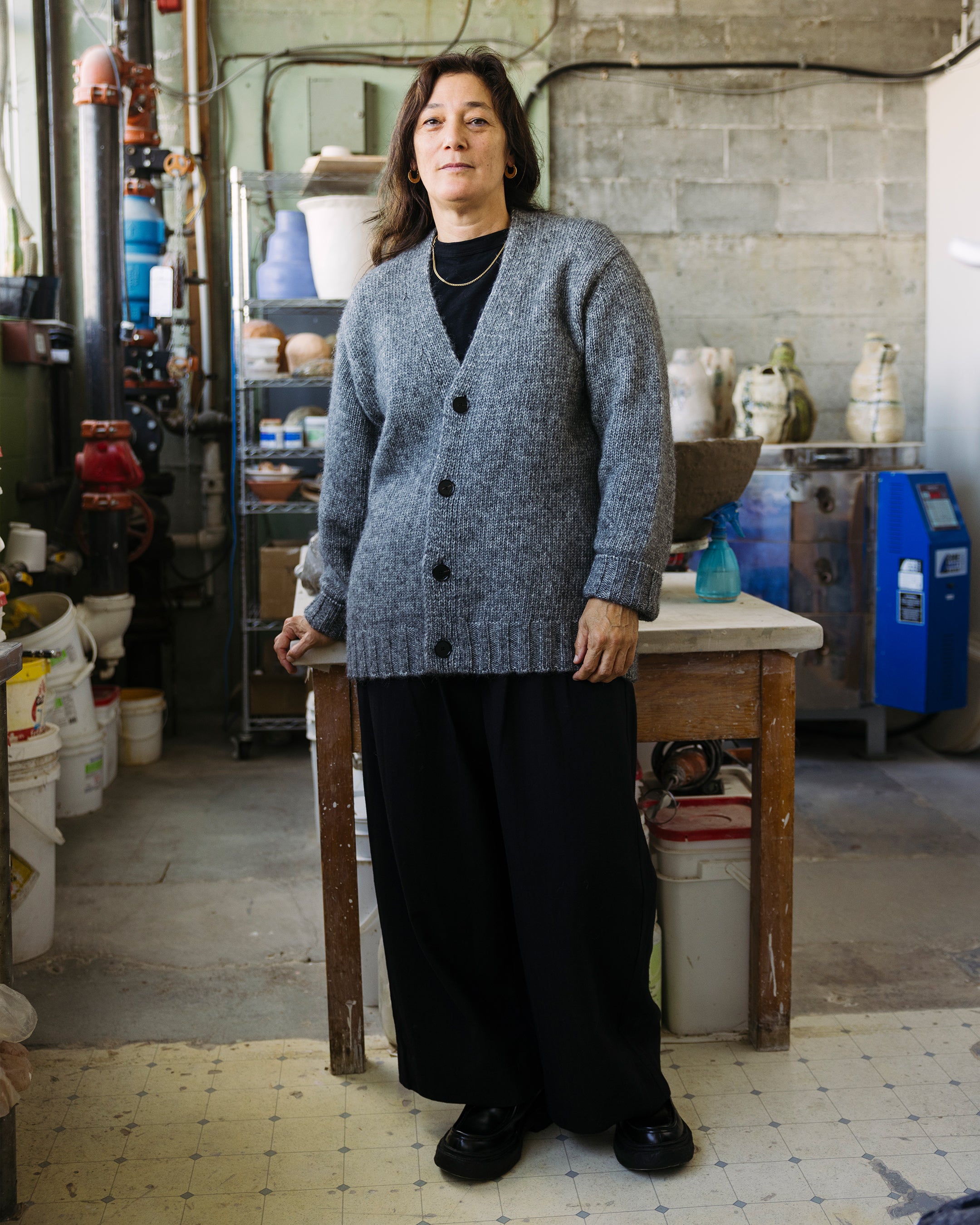

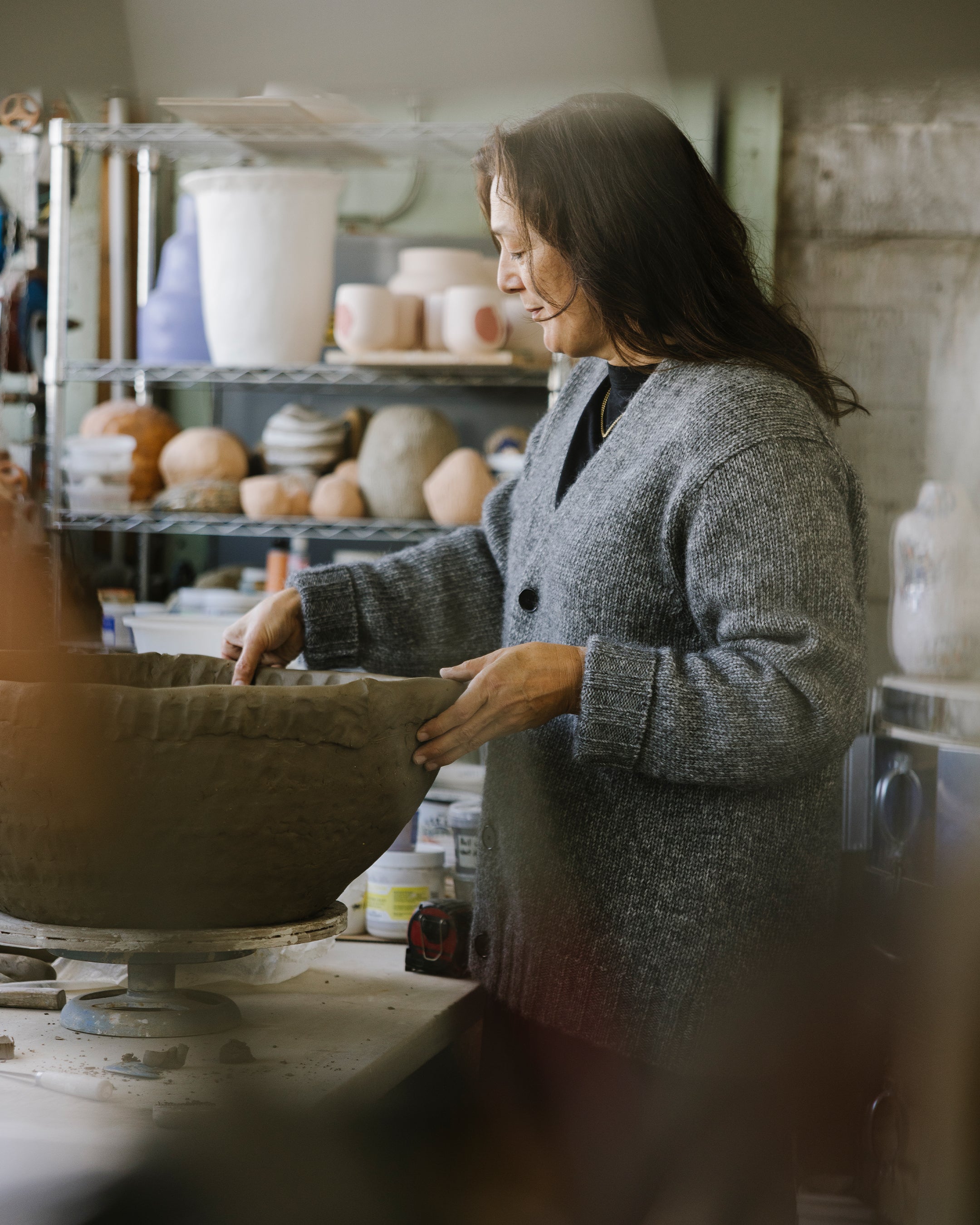
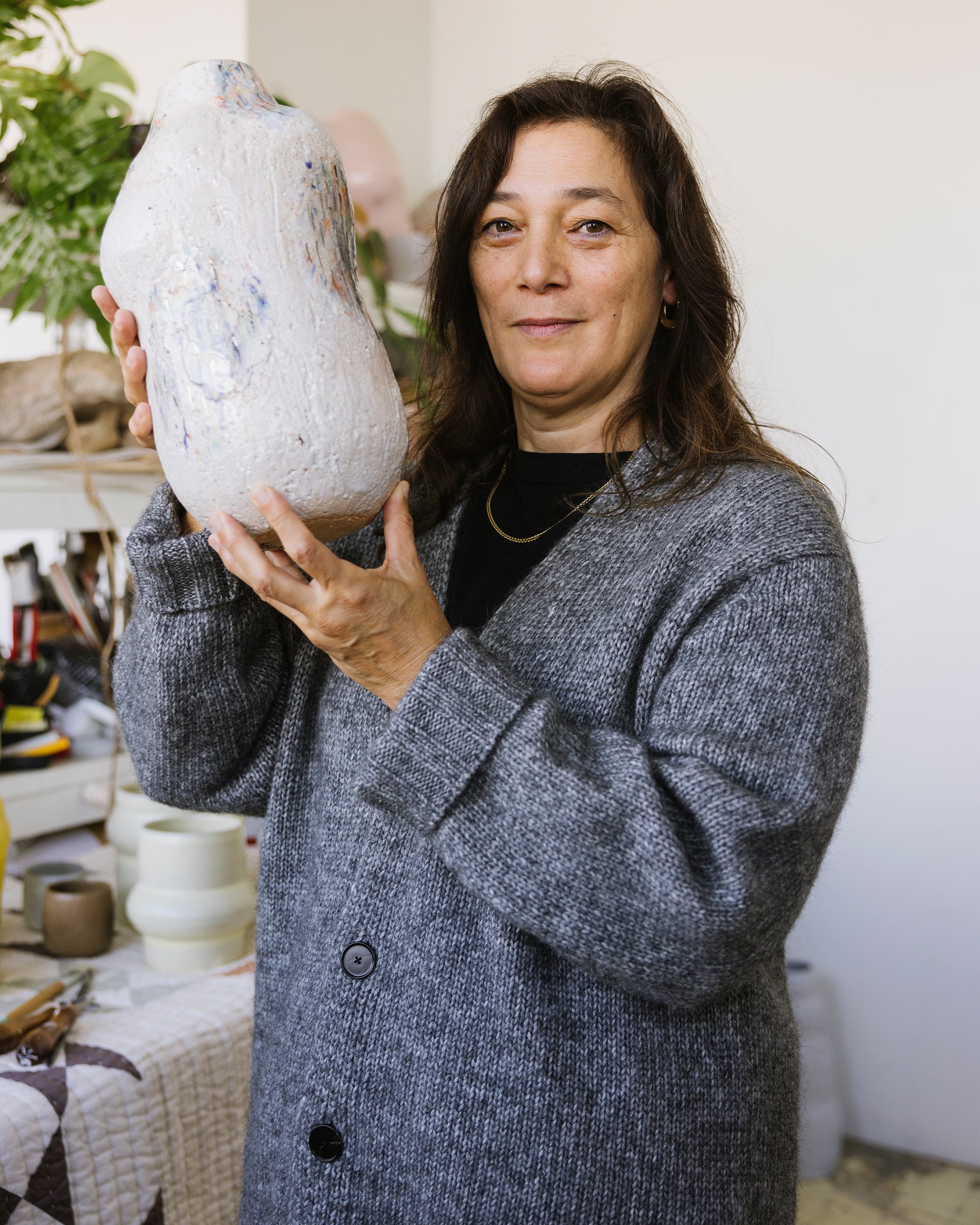
When did you first start working as a ceramicist and what drew you to this medium?
I first began working in ceramics when I was 20. But actually, it began much earlier since I essentially grew up in my dad’s pottery studio. I would observe his interactions with his visitors and collectors. I would notice the sequence and the rhythm of working in clay. Starting when I was around 12 years old, I would work summers for him to make some pocket money. In some ways it was a true apprenticeship: I swept floors, moved pots, mixed clay, glazed, plus loaded and unloaded kilns. So when I began throwing on the potters wheel myself I felt pretty confident in the pottery metier. The next step was to find my own glazes and forms.
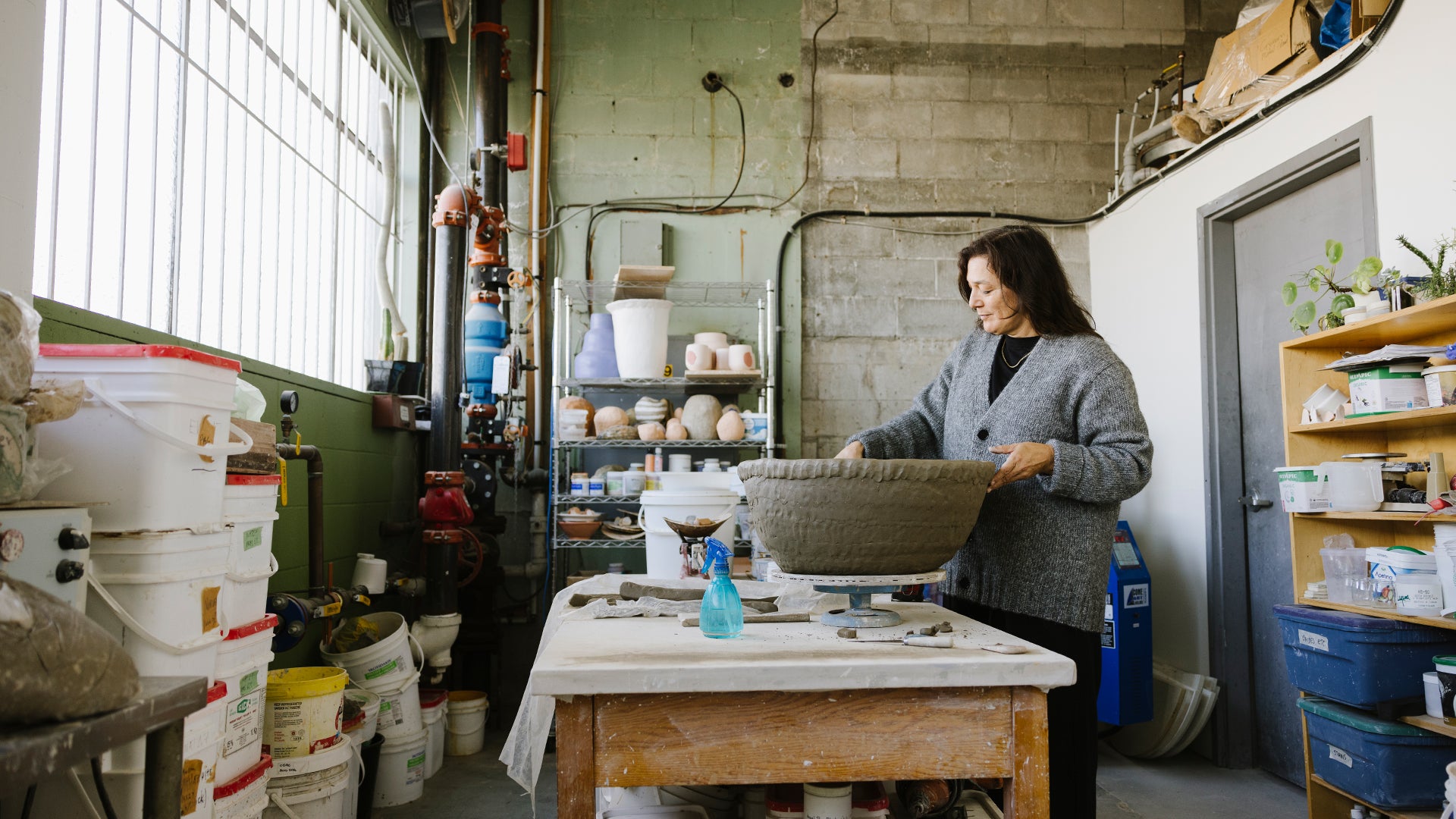
Can you tell us a bit about your current practise and some work you’re recently excited about?
My current practice is mostly in ceramic sculpture. I make spherical forms with rich surfaces of texture and bumps. They sit on the floor, and the larger ones are over 2 feet high. I like to place them in groups or pairs. The surfaces have slips and glazes, sometimes chunks of clay, areas of very thick goopy glazes, and lustres in gold and platinum. I feel like they are paintings on a 3D surface. I do multiple firings so I can layer glazes on and get tertiary glazes. Glazing can be like painting in the dark, as unfired glazes don’t usually have any hint of the final colour before firing. Test tiles can help guide you to a degree, but there are many factors that can change the glazes. This is the fun part of ceramics—the unknown! At the moment I’m working on a brown glaze made from Shore Pine ash. It has little bits of colour and texture. It’s quite a rich glaze. I am also gearing up to find a new sculpture clay and thinking of the surfaces a bit differently.
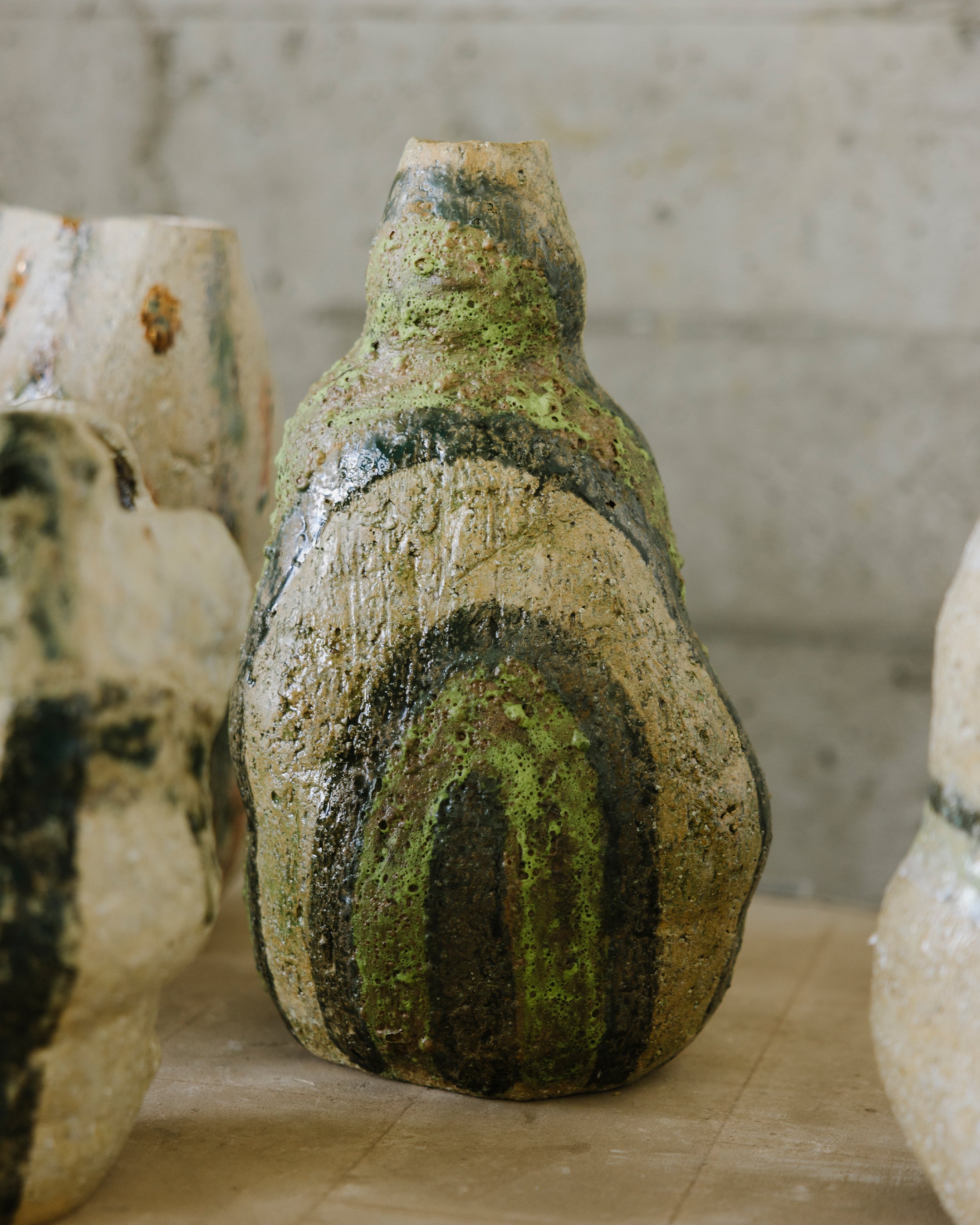
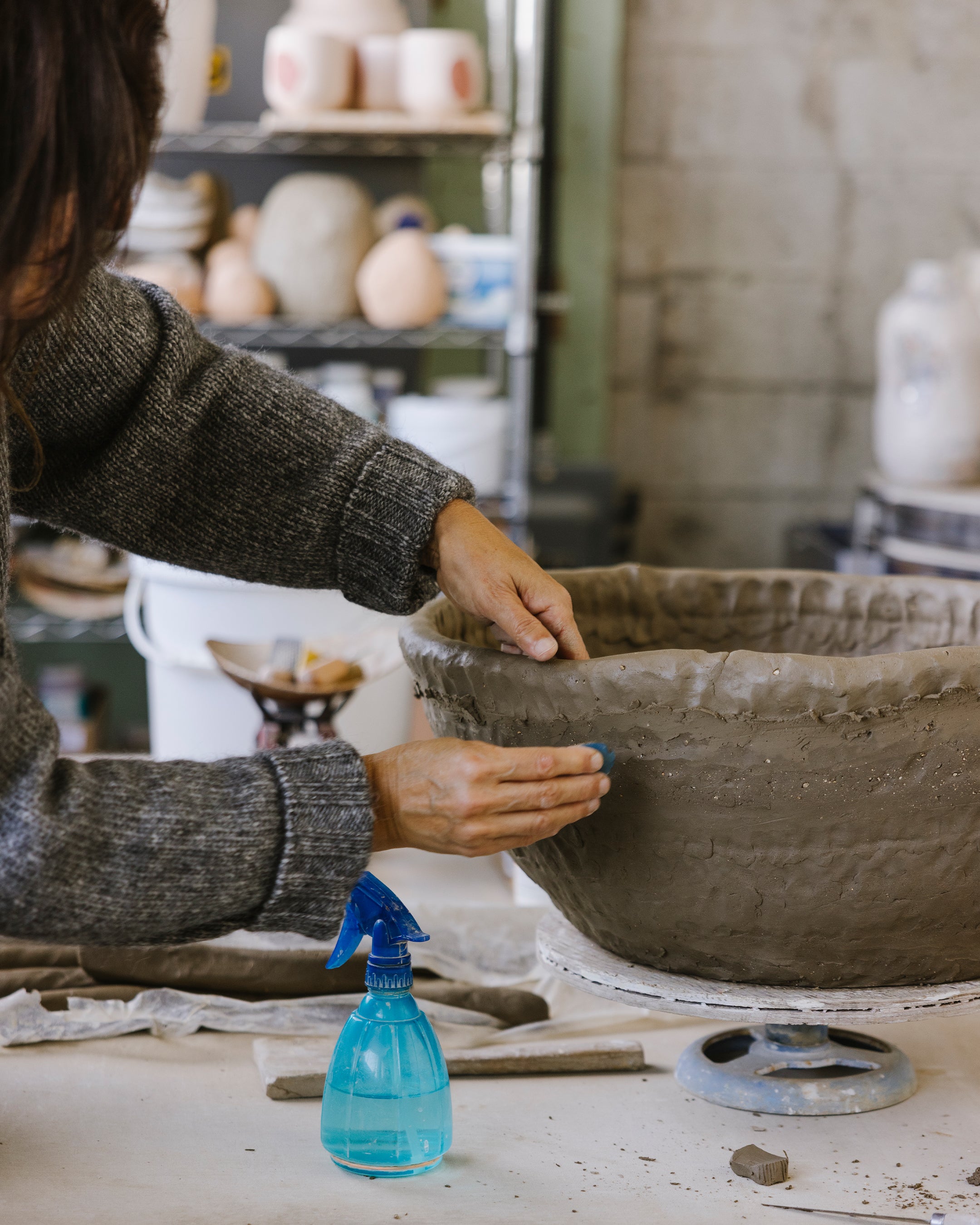
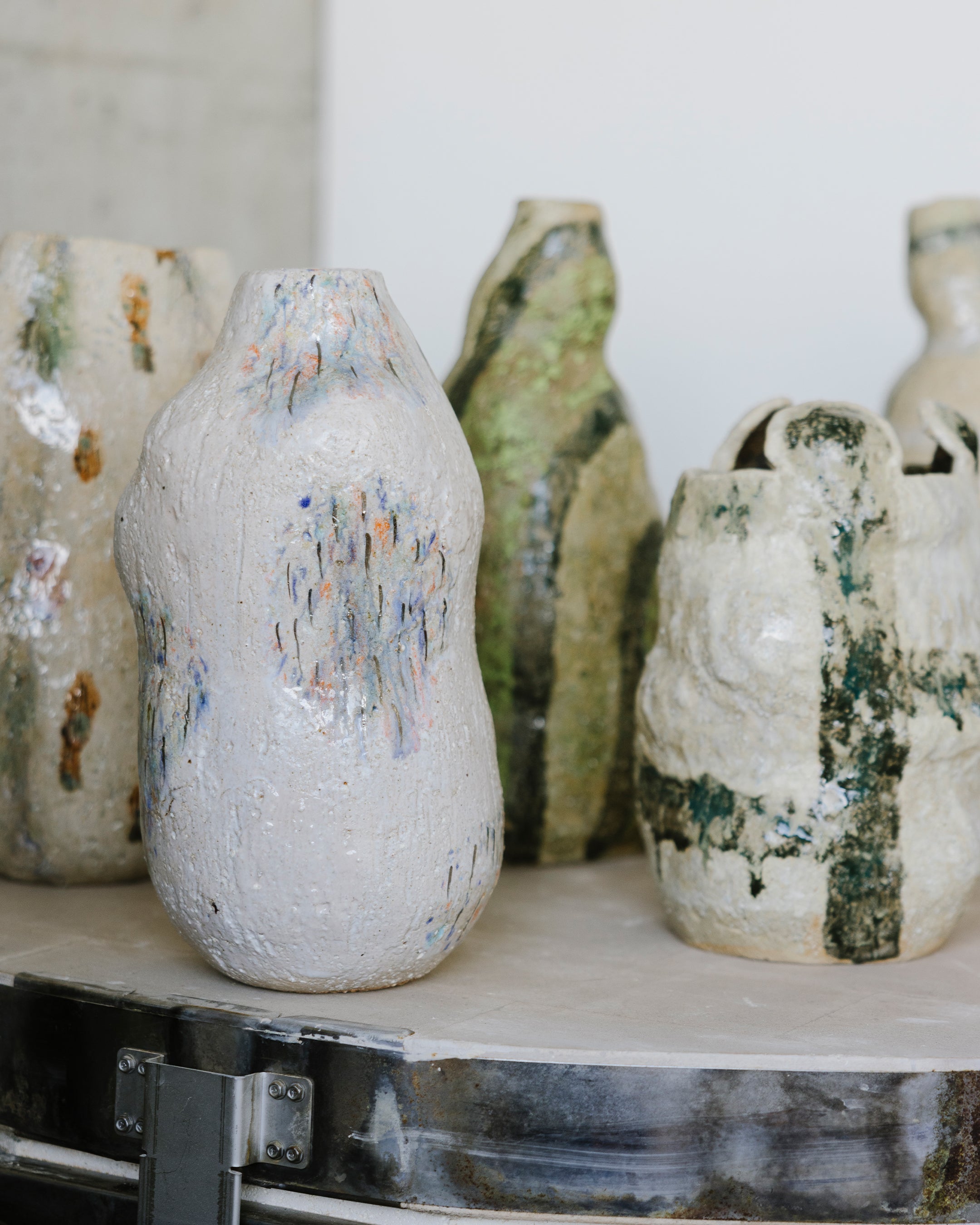
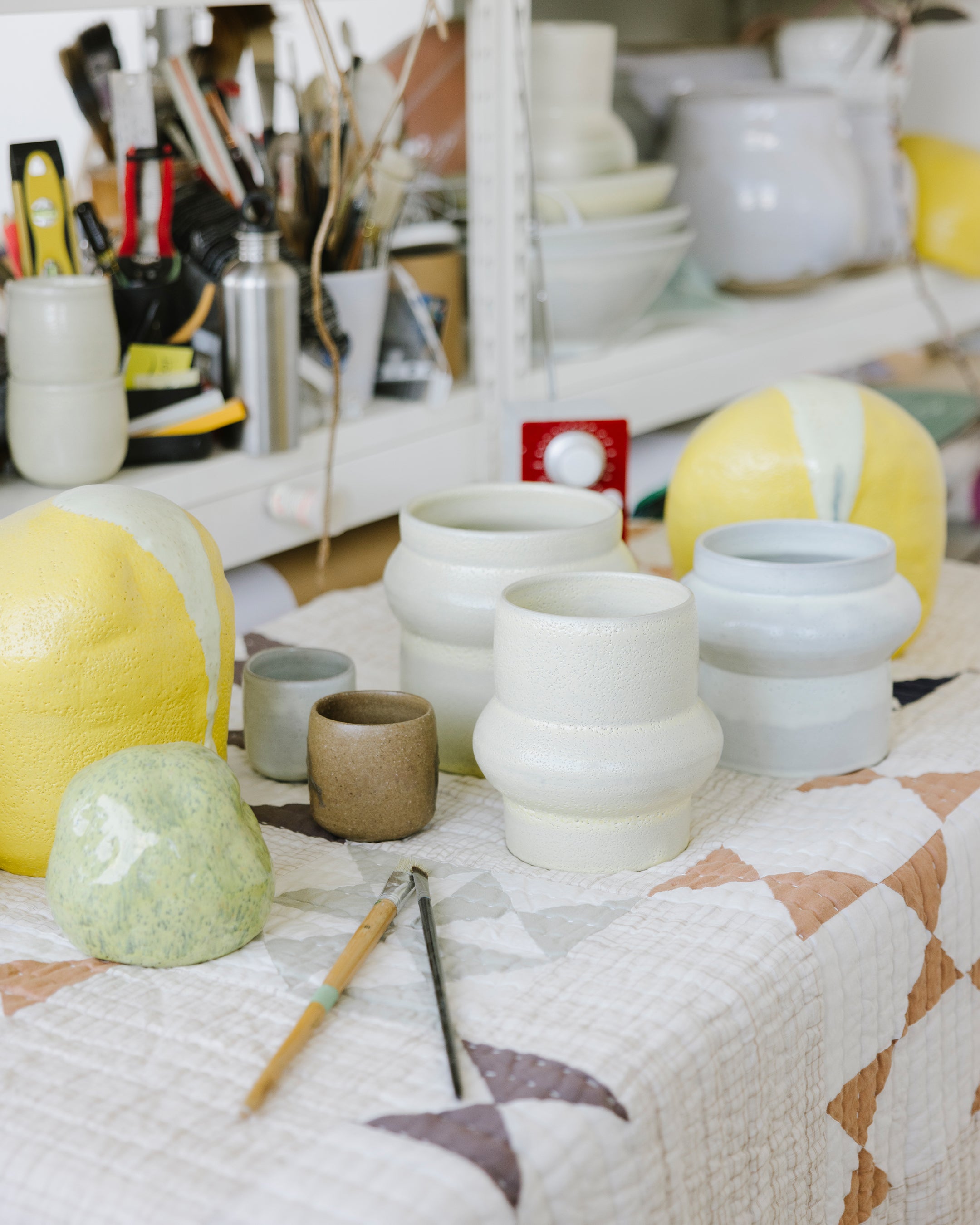
What does the making process of your pieces look like?
I use a basic coil-building technique to make my sculptural works. Sometimes I work on multiples at a time since I have to wait between layers for the clay to set and firm up before I add another coil. I use a wooden paddle to form the clay further, as well as a clay grater to take off extra clay and form the base of the texture. Sometimes I add extra clay in places. The coils get built right up to the end when I close in the form. Air is trapped inside and I can form a bit more. Sometimes I brush on a slip or slip clays onto the leather-hard surface. I have to remember to make a small hole before I biscuit fire it so that it does not explode when the molecular water is steaming off. Once bisque fired, I can glaze the work. This step can take several fires. Out of necessity, I have devised a way to get larger pieces in and out of the kiln.
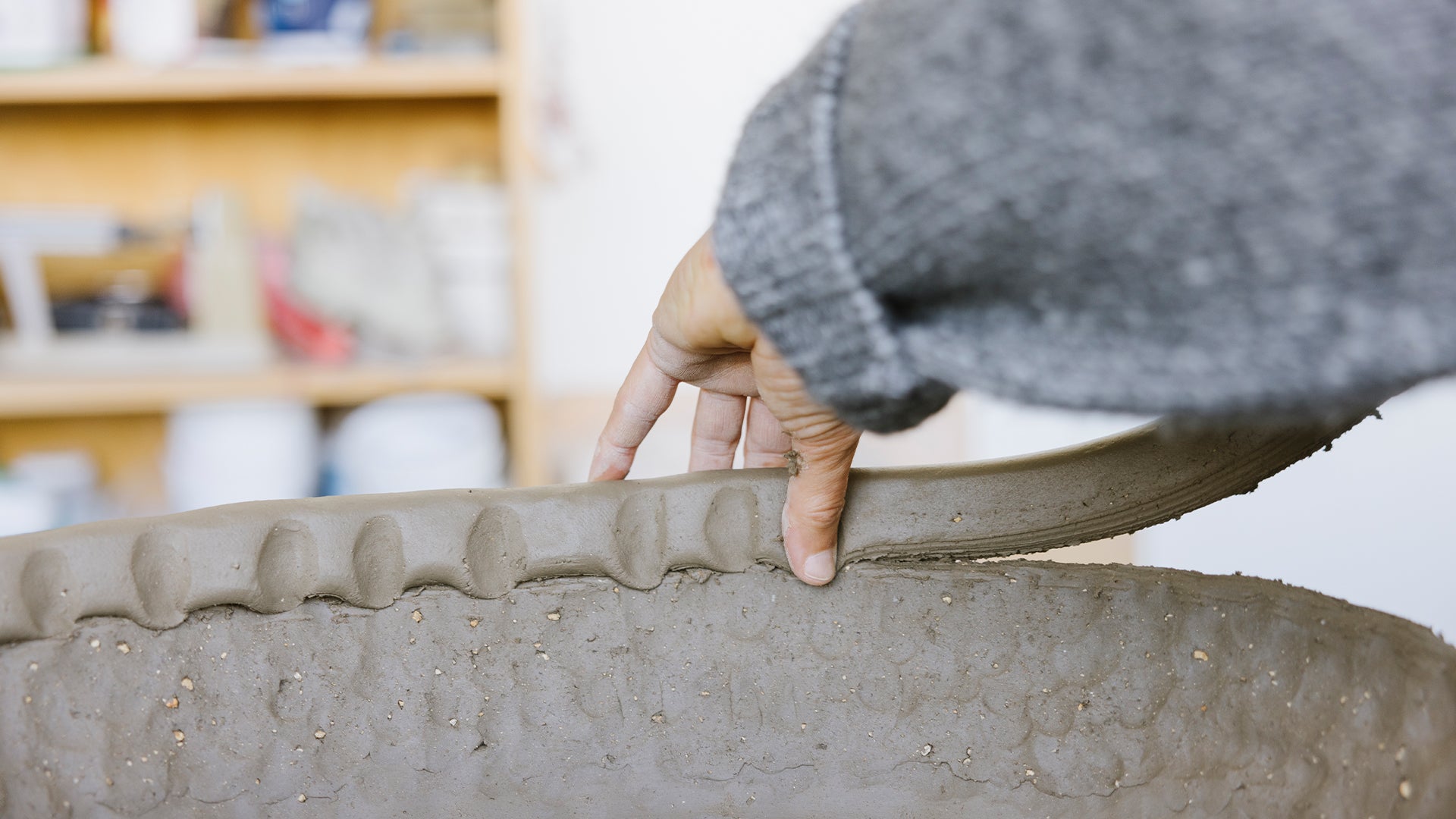
Has living in Vancouver made an impact on your work?
I think Vancouver has had an impact on my work. I have lived in the city most of my life. It’s a place where I can drop in and out of the art scene, so there is space to concentrate on the work. Vancouver has many artists but it’s never been an art centre on a big scale. This has created a way of looking at all sorts of art, not just the tried and tested big names. So I think there is a lot of innovation. And it’s very diverse. I think nature has played a big role too. The ocean is definitely a place of energy and expansion which enables a way to dream.
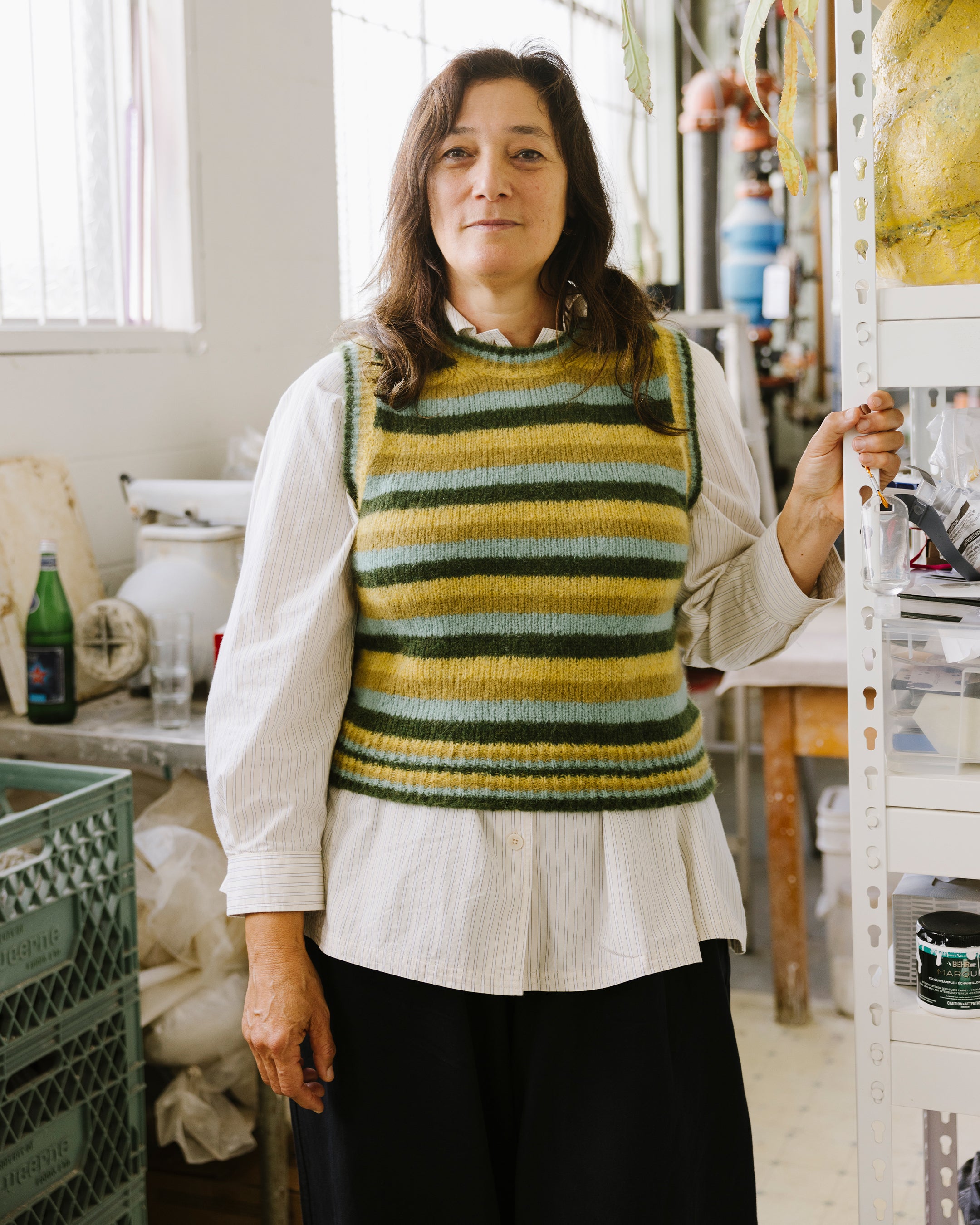
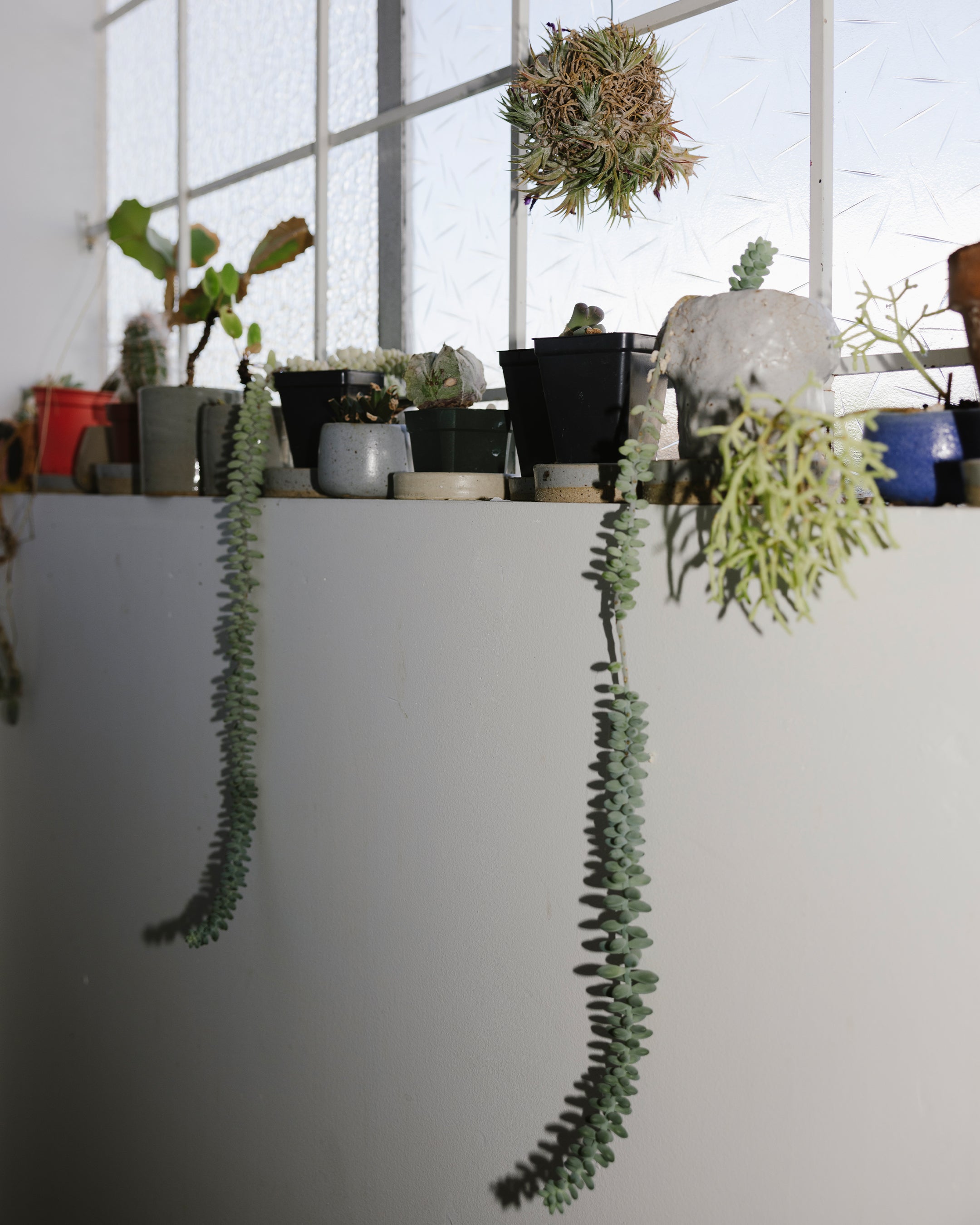
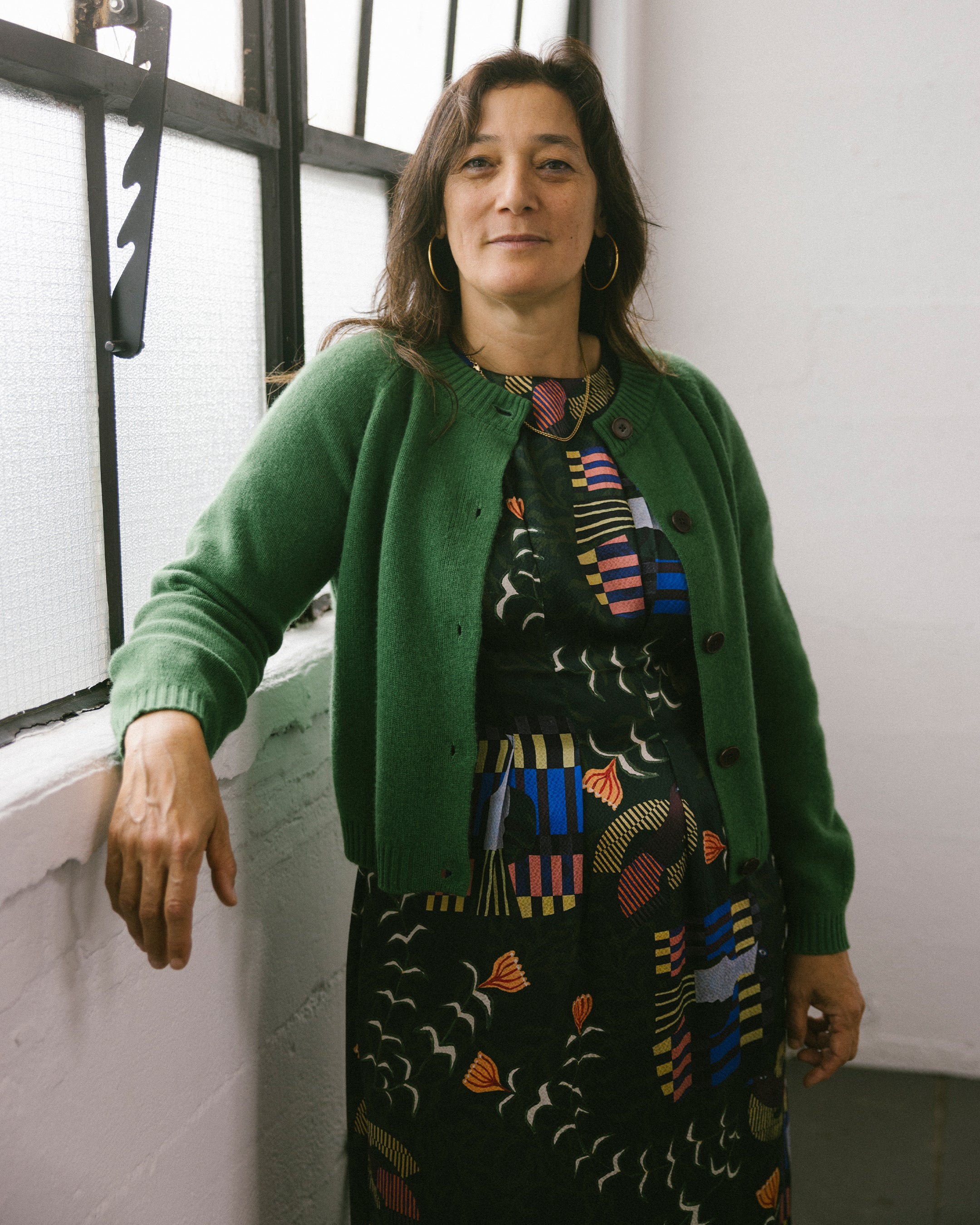
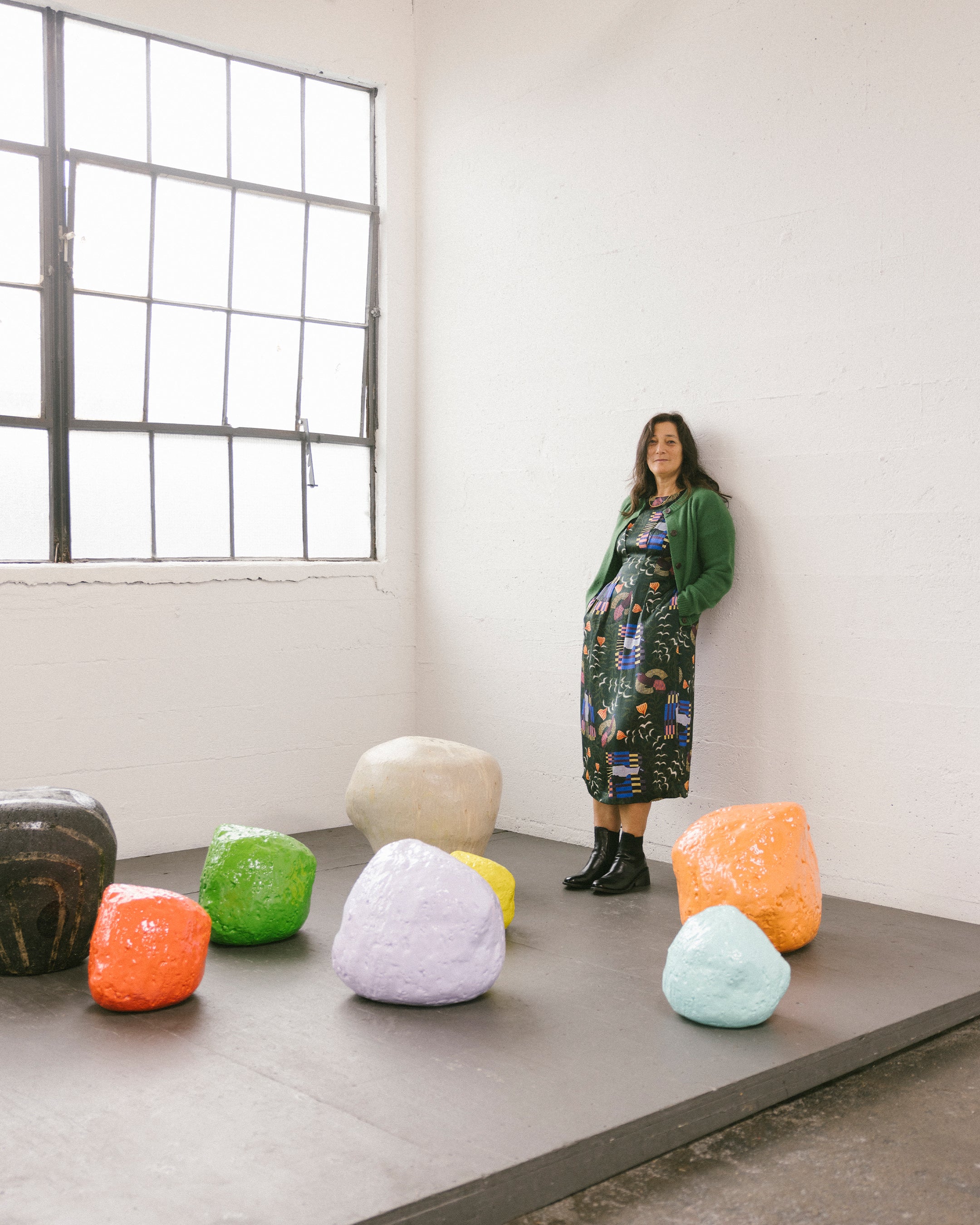
Can you tell us about the studio on Hornby, what it means to you, and where you will see it in the next few years?
Part of my working life is co-managing my late father's art estate. With this comes his old pottery studio on Hornby Island full with his pails and vats of glazes. Once I get set up, I want to start using the glazes as a way of recycling but also as a way to put something different onto my surfaces. A big part of the property on Hornby is taking care of the land. Editing out some of the things my dad planted or built that don’t really make the place better. Pruning trees and hedges and serious weeding. It's like a big project that will take multiple years to get to where I think it will be amazing–it’s already amazing but will be even more great. I see it as part of my art practice. So with the glazes, I’ll be putting his art onto mine, but with the land, I will be putting my ideas onto his garden.
